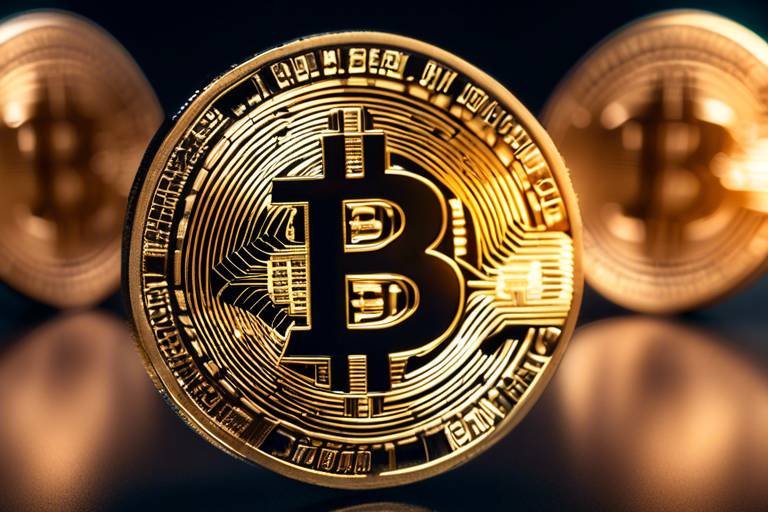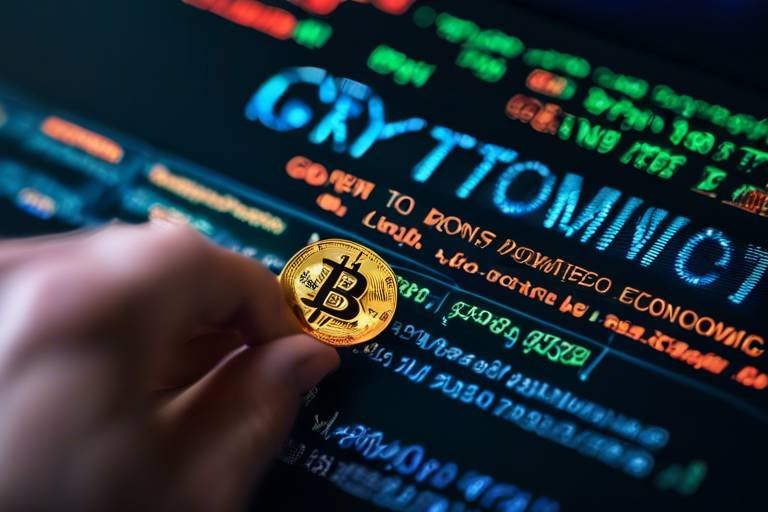The Future of Tokenomics - Trends and Predictions
In the rapidly evolving world of digital assets, tokenomics has emerged as a cornerstone of the cryptocurrency ecosystem. As we look towards the future, it’s clear that the landscape of tokenomics is not just changing; it’s exploding with potential. But what exactly does this mean for investors, users, and the economy at large? In this article, we’ll dive deep into the intricacies of tokenomics, exploring its current trends, challenges, and what the future might hold for digital assets.
Tokenomics is essentially the study of the economic principles that govern cryptocurrency tokens. It’s about understanding how supply and demand interact, how incentives are structured, and how these factors influence the overall value of digital currencies. Think of it as the financial DNA of blockchain projects. Just as DNA dictates the characteristics of living organisms, tokenomics shapes the viability and functionality of digital assets. With the rise of decentralized finance (DeFi), non-fungible tokens (NFTs), and innovative governance models, the importance of a solid understanding of tokenomics cannot be overstated.
As we navigate through emerging trends, we see that DeFi is at the forefront of this revolution. DeFi platforms are leveraging tokenomics to create decentralized financial services that challenge traditional banking systems. By utilizing smart contracts and blockchain technology, these platforms allow users to lend, borrow, and trade assets without intermediaries. This shift not only democratizes access to financial services but also introduces new economic models that could redefine how we think about money.
One of the most exciting trends within DeFi is yield farming. This practice enables users to earn rewards by providing liquidity to various platforms. Imagine planting seeds in a garden and watching them grow into a bountiful harvest. In the world of tokenomics, yield farming serves as a way for investors to cultivate their assets while contributing to the overall health of the ecosystem. However, it’s crucial to understand that with great reward comes great risk, and investors must navigate these waters carefully.
Another significant trend is liquidity mining, which incentivizes users to supply liquidity to decentralized exchanges. This process can be likened to a bustling marketplace where traders exchange goods. By providing liquidity, users help maintain the market's functionality and, in return, earn tokens as rewards. This not only enhances token utility but also fosters a sense of community among participants, as everyone works together to create a thriving marketplace.
On the other hand, the rise of NFTs has opened up new avenues for tokenomics. NFTs have revolutionized the concept of ownership and value in the digital space. They allow artists, musicians, and creators to monetize their work in ways never before possible. Just like owning a rare piece of art, owning an NFT can signify status and value. The economic models surrounding NFTs are still developing, but they promise to bring unprecedented opportunities for creators and collectors alike.
However, as tokenomics evolves, it faces increasing regulatory challenges. Governments across the globe are beginning to scrutinize the crypto space, and this could have significant implications for the future of digital assets. Compliance with regulations is crucial for the sustainability of tokenomics. It’s akin to following the rules of a game; without them, chaos ensues. The importance of security measures and regulatory compliance cannot be overstated, as they are essential for building trust within the ecosystem.
The global regulatory landscape is diverse and complex, with different countries adopting varying approaches to tokenomics. Some nations embrace innovation, while others impose strict regulations. This disparity can create challenges for international token projects, as they must navigate a labyrinth of legal requirements while striving for global reach. Understanding these regulatory nuances will be vital for the future success of tokenomics.
Looking ahead, the utility of tokens will be pivotal to their success. Predictions suggest that we will see a rise in the integration of tokenomics with traditional finance. This could reshape financial markets and enhance liquidity, creating a more interconnected financial ecosystem. Imagine a world where your digital assets can seamlessly interact with traditional banking systems, providing you with unparalleled flexibility and opportunity.
Furthermore, emerging governance models will play a critical role in shaping the future of tokenomics. These frameworks will determine how decisions are made within decentralized networks, influencing everything from protocol upgrades to community initiatives. As more projects adopt decentralized governance, we could witness a shift in power dynamics, placing more control in the hands of users and stakeholders.
- What is tokenomics? Tokenomics refers to the economic principles behind cryptocurrency tokens, including their supply, demand, and incentives.
- How do DeFi platforms utilize tokenomics? DeFi platforms leverage tokenomics to create decentralized financial services, allowing users to lend, borrow, and trade without intermediaries.
- What are yield farming and liquidity mining? Yield farming is a method for generating passive income by providing liquidity, while liquidity mining incentivizes users to contribute liquidity to decentralized exchanges.
- What challenges does tokenomics face? Regulatory scrutiny is a significant challenge, as governments are increasingly examining the crypto space and its implications for financial systems.
- How will tokenomics integrate with traditional finance? The integration of tokenomics with traditional finance could reshape financial markets, enhancing liquidity and creating new opportunities for users.
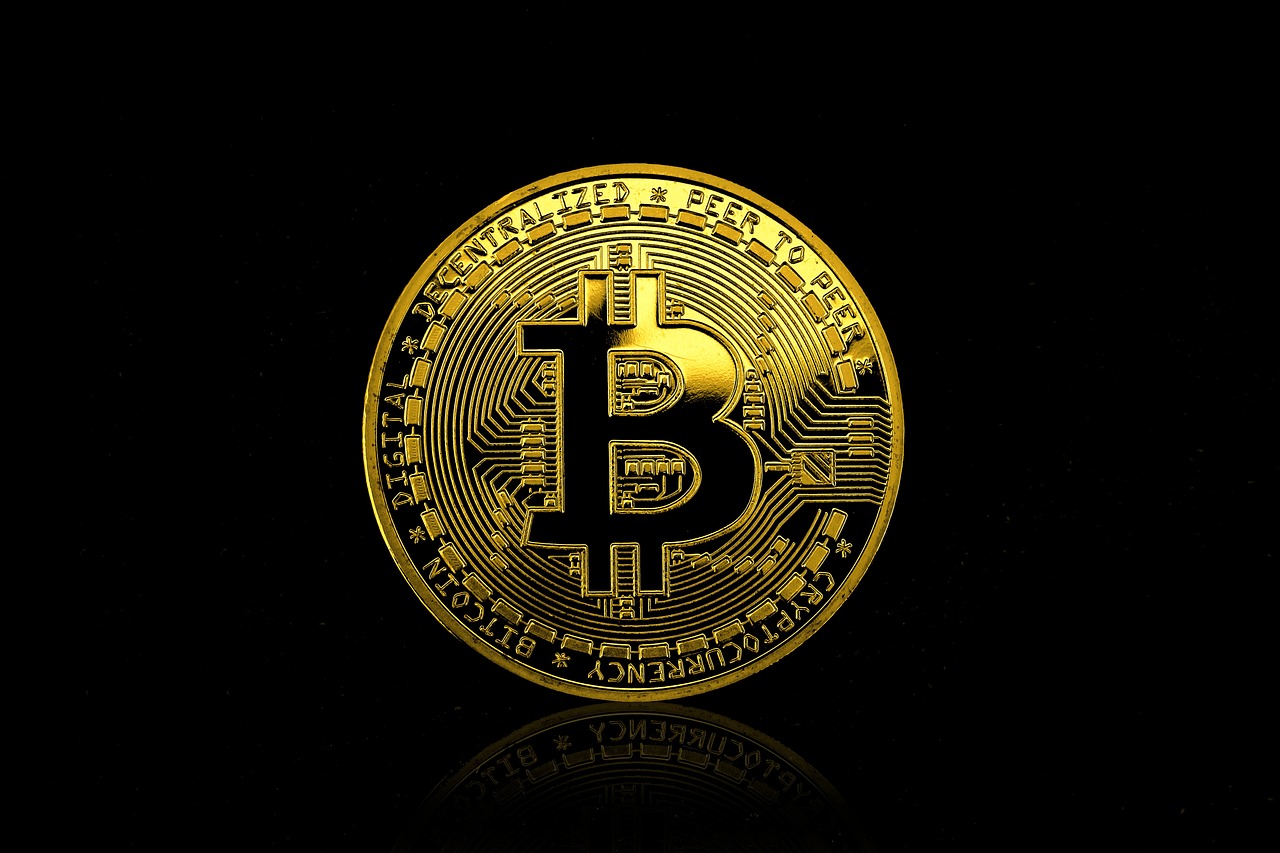
Understanding Tokenomics
Tokenomics is a fascinating field that dives deep into the economic principles surrounding cryptocurrency tokens. It's not just about the tokens themselves; it encompasses a broad spectrum of concepts including supply, demand, and incentives. Imagine tokenomics as the engine that powers the entire blockchain ecosystem. Without understanding how this engine operates, navigating the world of digital assets can feel like driving a car without knowing how to steer.
At its core, tokenomics examines how tokens are created, distributed, and utilized within various ecosystems. This includes understanding the mechanisms that govern their value and the incentives for users to hold or trade them. For instance, when a new token is launched, it often comes with a specific total supply and a defined distribution strategy. These factors play a crucial role in determining the token's market behavior and the overall health of its ecosystem.
One of the most compelling aspects of tokenomics is its relationship with incentive structures. Tokens often serve as a means to align the interests of different stakeholders in a network. For example, in a decentralized application (dApp), users might receive tokens for contributing resources or participating in governance. This creates a cycle where the value of the token is directly tied to the engagement and contributions of its community members.
To illustrate, consider the following table that summarizes key components of tokenomics:
| Component | Description |
|---|---|
| Supply | The total number of tokens that will ever exist. |
| Demand | The interest in purchasing or using the token. |
| Incentives | Rewards or benefits that encourage user participation. |
| Utility | The practical applications of the token within its ecosystem. |
Understanding these components is essential for anyone looking to invest in or utilize cryptocurrency tokens. Additionally, the concept of utility cannot be overlooked. Utility refers to the practical applications of a token within its ecosystem. A token that provides real value—whether through access to a service, governance rights, or even as a medium of exchange—tends to perform better in the market.
As the landscape of digital assets continues to evolve, so too will the principles of tokenomics. Emerging trends such as Decentralized Finance (DeFi) and Non-Fungible Tokens (NFTs) are reshaping how we think about tokens and their economic implications. By grasping the fundamentals of tokenomics, investors and users can better navigate this dynamic environment and make informed decisions that align with their financial goals.

Emerging Trends in Tokenomics
The landscape of tokenomics is continuously evolving, driven by technological advancements and innovative economic models. As we delve into the emerging trends within this dynamic field, it becomes clear that the future of digital currencies is not just about the tokens themselves, but also about the frameworks that govern their use and distribution. One of the most significant trends is the rise of Decentralized Finance (DeFi), which is reshaping traditional financial systems by leveraging the power of blockchain technology. DeFi platforms are creating a new financial ecosystem where users can participate in lending, borrowing, and trading without the need for intermediaries. This shift not only democratizes access to financial services but also fosters a sense of community and collaboration among users.
Another trend that is gaining traction is Yield Farming, a method that allows users to earn rewards by staking their tokens in various liquidity pools. This process has turned passive income generation into a highly sought-after strategy, attracting both seasoned investors and newcomers to the crypto space. The mechanics of yield farming can be complex, but at its core, it involves providing liquidity to decentralized exchanges in exchange for tokens, which can then be reinvested or traded. As more users engage in yield farming, the implications for tokenomics are profound, influencing everything from token supply to market behavior.
In tandem with yield farming, we have Liquidity Mining, which incentivizes users to contribute liquidity to decentralized platforms. By doing so, users are rewarded with tokens, enhancing the overall utility of those tokens within the ecosystem. This symbiotic relationship between liquidity providers and decentralized exchanges is crucial for maintaining market stability and ensuring that transactions can occur seamlessly. As liquidity mining becomes more prevalent, it raises important questions about the sustainability of these incentives and the long-term viability of token-based economies.
The rise of Non-Fungible Tokens (NFTs) is also a significant trend that cannot be overlooked. NFTs have revolutionized the concept of ownership and value in the digital space, allowing creators to tokenize their art, music, and other forms of intellectual property. This shift not only empowers artists by providing them with new monetization avenues but also alters the way we perceive value in the digital realm. The integration of NFTs into tokenomics introduces unique economic models that challenge traditional notions of scarcity and ownership, creating exciting opportunities for innovation.
Overall, the emerging trends in tokenomics highlight a shift towards more decentralized, community-driven economic models. As we continue to explore these developments, it is essential to remain adaptable and open to the possibilities that tokenomics presents. The future is bright for digital assets, and understanding these trends is key to navigating the ever-changing landscape.
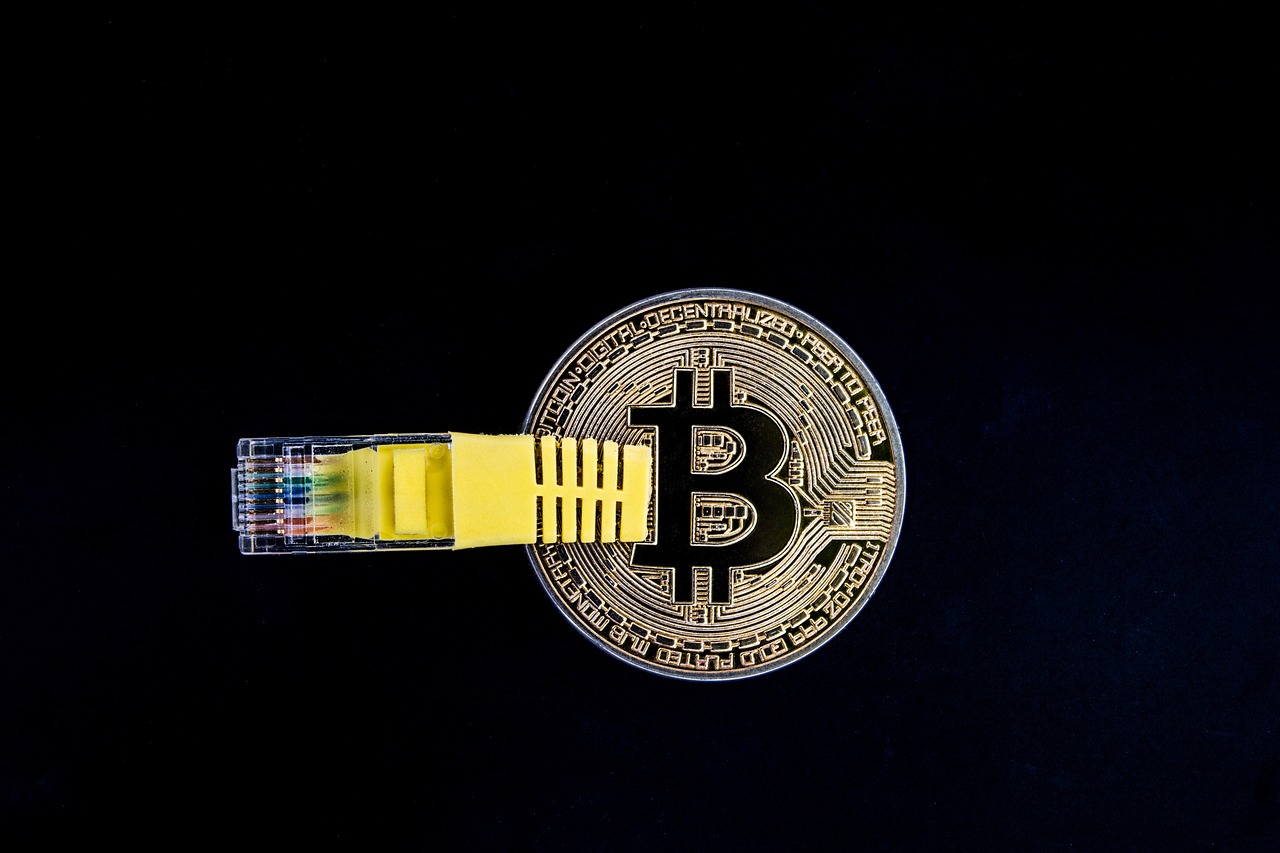
Decentralized Finance (DeFi)
Decentralized Finance, commonly known as DeFi, is rapidly transforming the traditional financial landscape by leveraging the power of blockchain technology and tokenomics. Imagine a world where you can lend, borrow, trade, and earn interest on your assets without the need for a bank or financial intermediary. That's the magic of DeFi! It utilizes smart contracts on blockchains, primarily Ethereum, to create an open-source financial ecosystem that is accessible to anyone with an internet connection.
At its core, DeFi aims to democratize finance by removing barriers to entry and providing users with more control over their financial assets. This is achieved through a variety of innovative platforms and protocols that allow users to engage in financial activities directly with one another. For instance, instead of relying on a centralized authority to manage your funds, you can use decentralized applications (dApps) that operate on the blockchain, ensuring transparency and security.
One of the most exciting aspects of DeFi is its ability to offer financial services that were previously only available through traditional institutions. Here are a few key services that DeFi platforms provide:
- Lending and Borrowing: Users can lend their assets to others and earn interest, or borrow assets by providing collateral.
- Decentralized Exchanges (DEXs): Platforms that allow users to trade cryptocurrencies directly with one another, without a central authority.
- Staking: Users can lock up their tokens in a DeFi protocol to earn rewards or interest, contributing to the network's security.
These services are typically powered by tokens, which serve various purposes within the ecosystem. For example, governance tokens allow holders to vote on protocol changes, while utility tokens facilitate transactions and incentivize user participation. The interplay of these tokens within DeFi platforms is a prime example of how tokenomics is reshaping the financial world.
However, while DeFi presents numerous opportunities, it also comes with its challenges. Issues such as smart contract vulnerabilities, regulatory scrutiny, and the need for user education remain significant hurdles. As the DeFi space continues to evolve, it is crucial for users to conduct thorough research and understand the risks involved.
In conclusion, DeFi is not just a trend; it represents a fundamental shift in how we think about finance. By harnessing the principles of tokenomics and decentralization, it empowers individuals to take charge of their financial futures. The potential for innovation is immense, and as more users flock to these platforms, we can expect to see even more exciting developments in the world of decentralized finance.
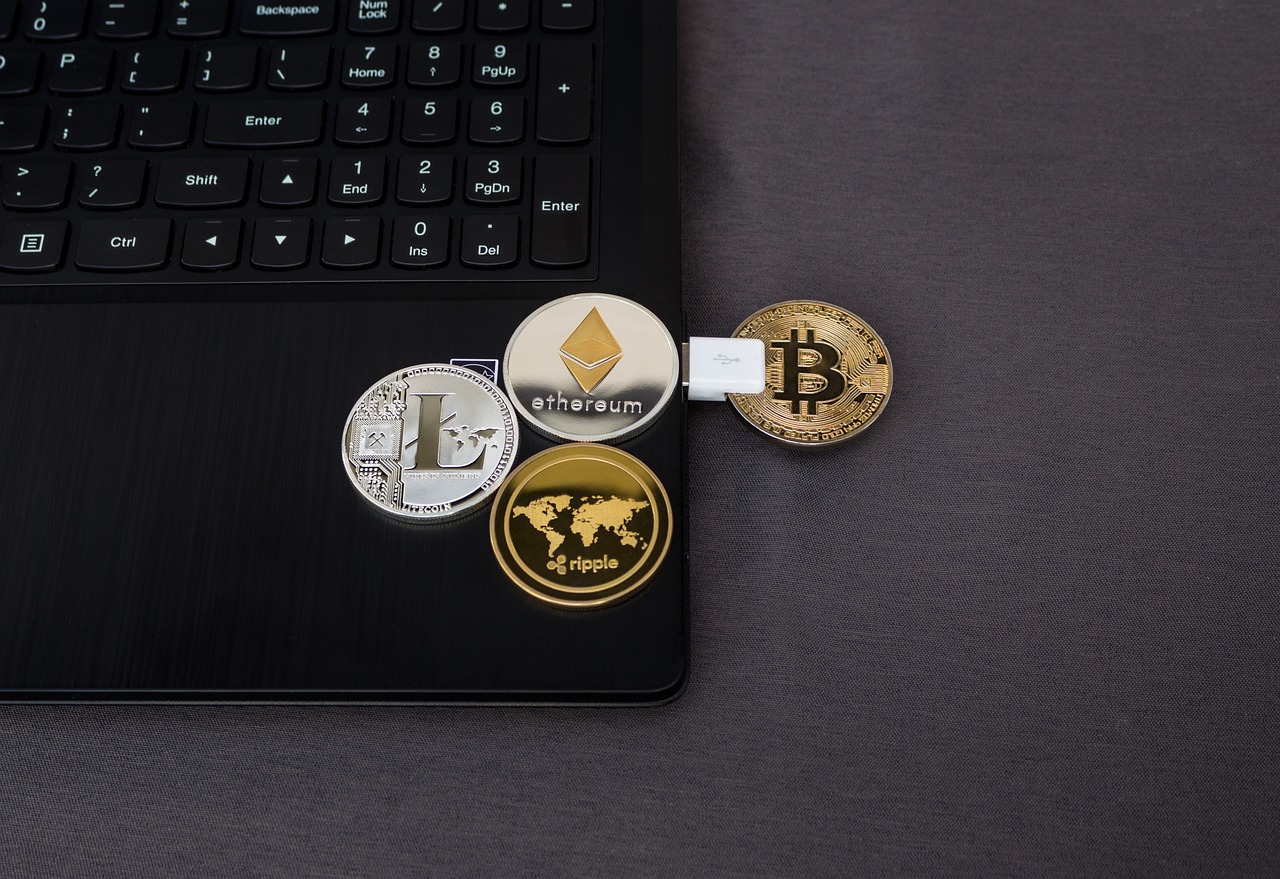
Yield Farming
Yield farming has swiftly emerged as a buzzword in the world of decentralized finance (DeFi), captivating both seasoned investors and curious newcomers alike. But what exactly is yield farming? In simple terms, it refers to the practice of using your cryptocurrency holdings to generate more cryptocurrency. Think of it as planting seeds in a garden; you invest your assets, and over time, they grow into a larger harvest. This process not only allows investors to earn passive income but also plays a crucial role in enhancing the overall liquidity of the DeFi ecosystem.
At its core, yield farming involves lending or staking your tokens in various DeFi platforms, which then use these assets to facilitate loans, trading, or other financial services. In return, users receive rewards, typically in the form of additional tokens. The potential returns can be quite enticing, often exceeding traditional investment vehicles. However, just like any investment, it comes with its own set of risks.
To illustrate how yield farming works, let’s break it down into a few key components:
- Liquidity Pools: These are pools of tokens that are locked into a smart contract to provide liquidity for decentralized exchanges. When you contribute to a liquidity pool, you earn a share of the trading fees generated by that pool.
- Staking: By staking your tokens in a platform, you help secure the network and validate transactions. In return, you earn rewards based on the amount staked and the duration of your stake.
- APY (Annual Percentage Yield): This metric indicates the potential earnings from yield farming, factoring in compounding interest. It’s essential to compare APYs across different platforms to find the most lucrative opportunities.
While the allure of high returns is certainly appealing, yield farming is not without challenges. The volatility of cryptocurrency prices can lead to significant fluctuations in value, and the smart contracts themselves can be vulnerable to hacks or bugs. Therefore, it’s vital for participants to conduct thorough research and understand the platforms they engage with.
In summary, yield farming represents a revolutionary shift in how we think about earning potential in the digital asset space. By leveraging innovative financial models, it opens up new avenues for profit but also requires a cautious approach. As the DeFi landscape continues to evolve, yield farming will likely play a pivotal role in shaping the future of tokenomics.
- What is yield farming? Yield farming is the practice of using cryptocurrency holdings to earn additional cryptocurrency through lending or staking on DeFi platforms.
- Is yield farming safe? While it can be profitable, yield farming carries risks such as price volatility and smart contract vulnerabilities. Always do your research before participating.
- How do I start yield farming? To start yield farming, choose a reputable DeFi platform, deposit your tokens into a liquidity pool or stake them, and begin earning rewards.
- What is APY in yield farming? APY stands for Annual Percentage Yield, which indicates the potential earnings from yield farming, including compounding interest.
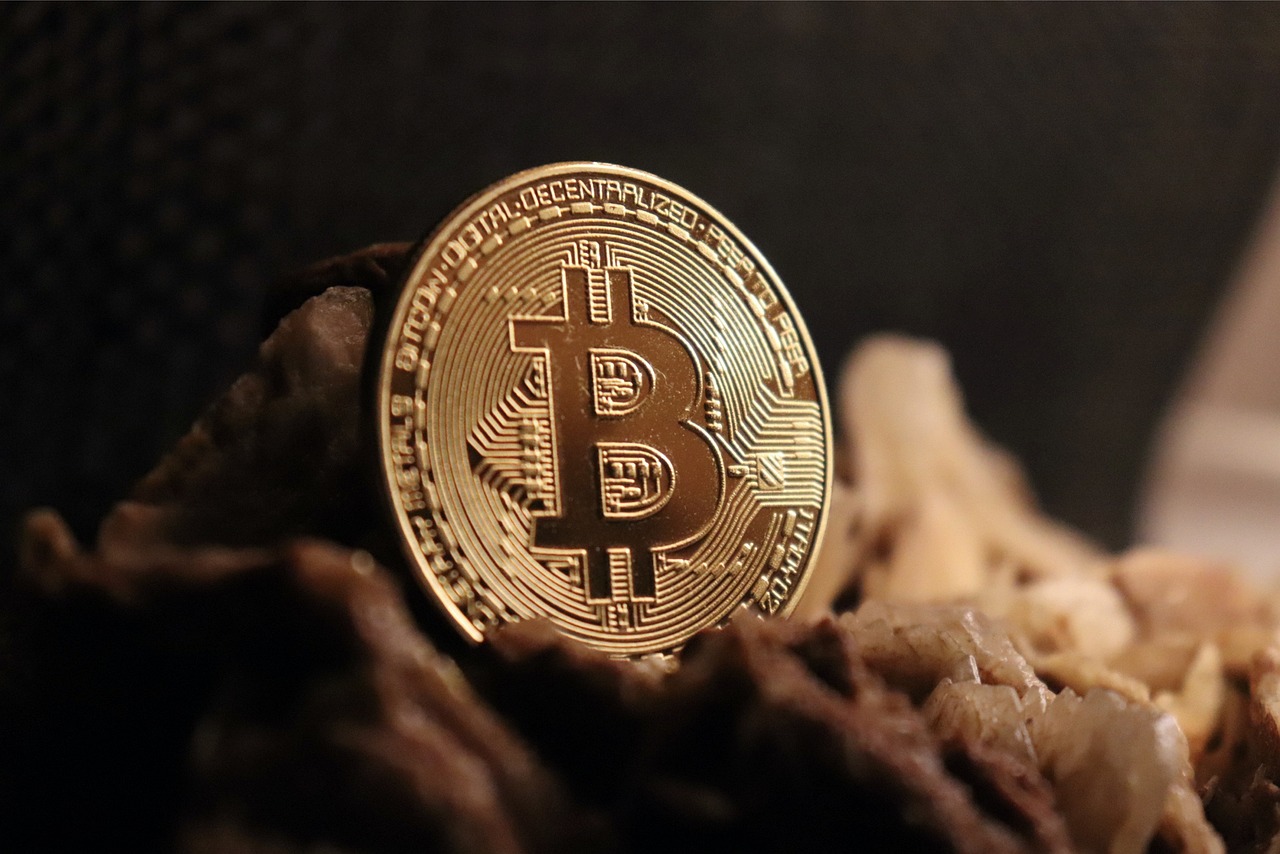
Liquidity Mining
Liquidity mining has emerged as a fascinating and lucrative method within the realm of decentralized finance (DeFi), allowing users to earn rewards by providing liquidity to various protocols. At its core, liquidity mining is about incentivizing users to deposit their tokens into a liquidity pool, which is then used to facilitate trading on decentralized exchanges (DEXs). Think of it as a way for investors to earn interest on their idle assets, much like a savings account, but with the potential for much higher returns!
When users contribute their tokens to a liquidity pool, they are rewarded with additional tokens from the platform as an incentive for their participation. This process not only enhances the liquidity available for trading but also fosters a sense of community and engagement among token holders. The rewards can vary significantly based on several factors, including the total amount of liquidity provided, the duration of the investment, and the specific protocol's reward structure.
One of the most exciting aspects of liquidity mining is its ability to democratize finance. Unlike traditional finance, which often requires significant capital to participate, liquidity mining allows anyone with a small amount of cryptocurrency to join in and start earning rewards. This opens the door for a broader range of participants, from seasoned investors to newcomers eager to explore the world of DeFi.
However, it's essential to approach liquidity mining with caution. While the rewards can be enticing, there are inherent risks involved, such as impermanent loss. This occurs when the value of the tokens in the liquidity pool fluctuates compared to holding them in a wallet. Therefore, potential liquidity miners should carefully assess their risk tolerance and consider diversifying their investments to mitigate potential losses.
To better understand how liquidity mining works, let's take a look at a simple table illustrating the process:
| Step | Description |
|---|---|
| 1 | User deposits tokens into a liquidity pool. |
| 2 | The liquidity pool is utilized for trading on a DEX. |
| 3 | User receives liquidity provider (LP) tokens as proof of their contribution. |
| 4 | User earns rewards in the form of additional tokens. |
| 5 | User can withdraw their tokens and rewards at any time. |
As the DeFi space continues to evolve, liquidity mining is likely to play an increasingly vital role in shaping the future of tokenomics. It not only enhances the functionality of decentralized exchanges but also encourages a collaborative environment where users can actively participate in the growth of their favorite projects. So, whether you're a seasoned pro or just dipping your toes into the world of crypto, liquidity mining offers an exciting opportunity to engage with the blockchain ecosystem while potentially reaping substantial rewards.
- What is liquidity mining? Liquidity mining is the process of providing liquidity to decentralized exchanges in exchange for rewards, typically in the form of additional tokens.
- What are the risks associated with liquidity mining? The primary risks include impermanent loss and the volatility of the tokens involved, which can affect the overall returns.
- Can anyone participate in liquidity mining? Yes! Liquidity mining is accessible to anyone with a small amount of cryptocurrency, making it a democratized financial opportunity.
- How are rewards calculated in liquidity mining? Rewards are often calculated based on the amount of liquidity provided, the duration of the investment, and the specific protocol's reward structure.
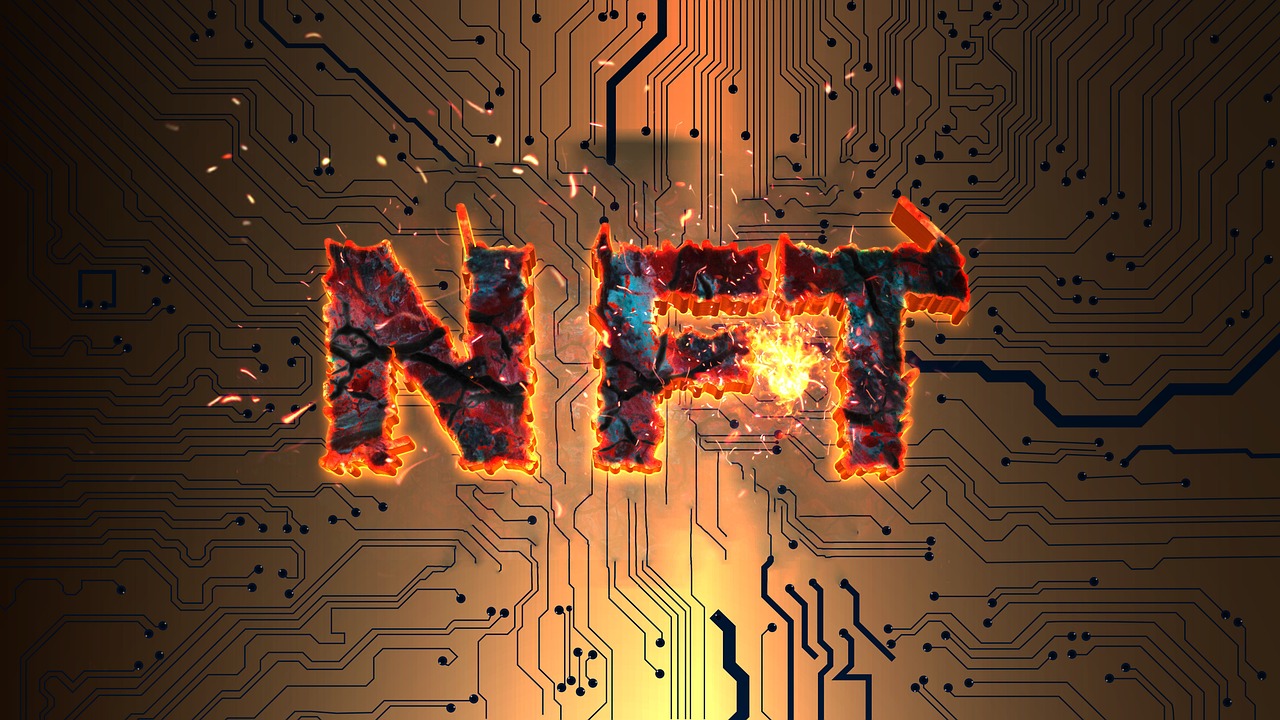
NFTs and Tokenomics
Non-fungible tokens, or NFTs, have taken the digital world by storm, representing a unique blend of art, technology, and ownership. Unlike traditional cryptocurrencies such as Bitcoin or Ethereum, which are fungible and can be exchanged on a one-to-one basis, NFTs are unique and cannot be exchanged on a like-for-like basis. This uniqueness is what makes them so appealing to collectors and investors alike. But how do NFTs fit into the broader picture of tokenomics?
At the core of tokenomics, we find the principles of supply and demand, and NFTs have introduced a fascinating twist to these principles. The scarcity of a digital asset, combined with its perceived value, can lead to astonishing price tags. Think of NFTs as digital collectibles; just as a rare baseball card can fetch thousands of dollars, so can a digital artwork or a virtual real estate parcel. This creates a new marketplace where digital ownership is not just a concept but a tangible asset that can be bought, sold, and traded.
One of the most exciting aspects of NFTs is their ability to create new economic models. For instance, artists can tokenize their work, allowing them to sell directly to consumers without intermediaries. This direct connection not only increases their profits but also fosters a community of supporters who feel more connected to the artists. Additionally, NFTs can be programmed with smart contracts that allow creators to earn royalties on future sales, ensuring that they continue to benefit from their work as it changes hands.
The impact of NFTs on tokenomics extends beyond art. They are revolutionizing various sectors, including gaming, music, and even real estate. For example, in the gaming industry, NFTs enable players to truly own their in-game assets, which can be traded or sold in secondary markets, creating a new layer of value within the gaming ecosystem. Similarly, musicians are leveraging NFTs to sell exclusive content directly to fans, bypassing traditional distribution channels.
However, the rise of NFTs is not without its challenges. The environmental concerns associated with blockchain technology, particularly regarding energy consumption, have sparked debates about the sustainability of NFT transactions. As the NFT market continues to grow, so does the need for solutions that address these environmental impacts.
In summary, NFTs are not just a passing trend; they represent a significant evolution in the world of tokenomics. By redefining ownership and value in the digital space, NFTs are paving the way for innovative economic models that could shape the future of various industries. As we move forward, it will be fascinating to observe how these unique tokens continue to evolve and influence the broader economic landscape.
- What are NFTs? NFTs are unique digital tokens that represent ownership of a specific item or piece of content on the blockchain.
- How do NFTs work? NFTs use blockchain technology to verify their uniqueness and ownership, allowing them to be bought, sold, and traded like traditional assets.
- Can NFTs be used in industries other than art? Yes, NFTs have applications in gaming, music, real estate, and more, offering new ways to create and monetize digital assets.
- What are the environmental concerns surrounding NFTs? The energy consumption of blockchain networks, particularly those using proof-of-work mechanisms, raises concerns about the environmental impact of NFT transactions.

Regulatory Challenges Ahead
As the world of tokenomics continues to evolve, it finds itself increasingly under the microscope of regulatory bodies. This scrutiny is not just a passing trend; it is a vital aspect that could dictate the future trajectory of digital assets. With governments and financial institutions grappling with how to approach this new frontier, the regulatory landscape is becoming more complex and nuanced. The challenge lies in balancing innovation with protection, ensuring that the benefits of tokenomics can be harnessed while mitigating potential risks.
One of the primary concerns for regulators is the potential for fraud and manipulation. The decentralized nature of cryptocurrencies and tokens makes it easier for bad actors to exploit loopholes, leading to significant financial losses for unsuspecting investors. As a response, regulatory bodies are increasingly focusing on compliance measures that can safeguard users while still allowing for the innovation that tokenomics brings. This includes establishing clear guidelines on what constitutes a security and ensuring that token offerings adhere to these standards.
Moreover, the global nature of tokenomics adds another layer of complexity. Different countries have varying approaches to regulation, which can create a patchwork of rules that are difficult for projects to navigate. For instance, while some nations embrace cryptocurrencies and offer clear regulatory frameworks, others impose strict bans or limitations. This disparity can lead to confusion and inconsistency, making it challenging for international projects to operate smoothly. Below is a brief overview of how different regions are approaching tokenomics regulation:
| Region | Regulatory Approach |
|---|---|
| United States | Mixed; SEC regulates tokens as securities |
| European Union | Developing comprehensive regulations |
| China | Strict bans on ICOs and cryptocurrency trading |
| Singapore | Proactive; clear guidelines for token offerings |
Compliance and security are paramount in this evolving landscape. Projects must prioritize building robust security measures to protect against hacks and breaches, which have become alarmingly common. This involves not just technical safeguards but also transparent practices that foster trust among users. In a space where anonymity is often a feature, establishing a reputation for security can be a significant competitive advantage.
As we look to the future, the regulatory environment for tokenomics is likely to continue evolving. Institutions may start to adopt more standardized frameworks that can be universally applied, which could lead to greater acceptance and integration of digital assets into mainstream finance. However, it is crucial for the community to engage with regulators proactively. By participating in discussions and providing insights into the technology, the tokenomics community can help shape regulations that both protect consumers and encourage innovation.
In conclusion, while regulatory challenges loom large over the tokenomics landscape, they also present an opportunity for growth and maturation. As the dialogue between regulators and the crypto community continues, the potential for a balanced approach that fosters innovation while ensuring safety is within reach. The journey ahead may be fraught with obstacles, but the rewards of a well-regulated tokenomics ecosystem could lead to a new era of financial possibilities.
- What are the main regulatory challenges for tokenomics? The main challenges include fraud prevention, compliance with varying international laws, and ensuring security for investors.
- How do different countries approach tokenomics regulation? Countries vary widely in their regulatory approaches, with some offering clear guidelines and others imposing strict bans.
- Why is compliance important in tokenomics? Compliance helps build trust within the ecosystem and protects users from potential fraud and losses.

Compliance and Security
In the rapidly evolving world of tokenomics, compliance and security are not just buzzwords; they are essential pillars that support the entire ecosystem. As more individuals and institutions embrace cryptocurrencies, the need for stringent compliance measures has become paramount. This is not merely about adhering to regulations; it’s about building trust among users and investors. Imagine walking into a bank where security protocols are lax. Would you feel comfortable depositing your hard-earned money? The same principle applies to tokenomics. A lack of compliance and security can lead to a loss of confidence, driving users away and stunting growth.
To understand the significance of compliance in tokenomics, we must first recognize the regulatory landscape. Different countries have varied approaches to cryptocurrency regulations, which can create a complex web of compliance requirements for token projects. For instance, some nations may mandate Know Your Customer (KYC) protocols, while others may focus on Anti-Money Laundering (AML) regulations. This diversity can pose challenges for projects aiming for global reach. In fact, a recent survey showed that over 60% of blockchain projects cite regulatory uncertainty as a major hurdle for their operations.
Security, on the other hand, is the backbone of any successful tokenomics strategy. With the rise of hacks and scams in the crypto space, ensuring that security measures are in place is crucial. Projects must implement robust security protocols to protect user data and funds. This includes employing encryption technologies, conducting regular audits, and adopting multi-signature wallets. According to a report by Chainalysis, over $7.7 billion was stolen from DeFi protocols in 2021 alone, highlighting the urgent need for enhanced security measures.
Here are some key compliance and security measures that token projects should consider:
- Regular Audits: Conducting third-party audits to identify vulnerabilities.
- Transparent Reporting: Maintaining transparency in operations to foster trust.
- User Education: Educating users about security practices to protect their assets.
The importance of compliance and security cannot be overstated. They serve as the foundation for a sustainable tokenomics framework. As the industry matures, we can expect to see more standardized regulations that will not only protect users but also foster innovation. In this way, compliance and security will not merely be obstacles to overcome but will become enablers of growth and trust in the digital asset space.
Q1: Why is compliance important in tokenomics?
Compliance ensures that token projects adhere to legal regulations, which helps build trust with users and investors. It also mitigates risks associated with legal penalties.
Q2: What are some common security measures in tokenomics?
Common security measures include regular audits, encryption, multi-signature wallets, and user education to prevent hacks and scams.
Q3: How does regulatory uncertainty affect token projects?
Regulatory uncertainty can hinder the growth of token projects by creating challenges in operations and preventing them from reaching a global audience.

Global Regulatory Landscape
The for tokenomics is anything but simple. As digital assets continue to gain traction, governments and regulatory bodies around the world are scrambling to catch up. The approach to regulation varies significantly from one country to another, leading to a patchwork of rules and guidelines that can be confusing for investors and developers alike. For instance, while some nations embrace innovation and create favorable environments for blockchain technology, others resort to stringent regulations that may stifle growth.
In the United States, the regulatory framework is largely influenced by the Securities and Exchange Commission (SEC), which has been vocal about its stance on cryptocurrencies and tokens. The SEC's classification of certain tokens as securities means that they must adhere to strict compliance requirements. This has led to a cautious approach among many startups, who are wary of potential legal repercussions. On the other hand, countries like Switzerland and Singapore have developed comprehensive regulatory frameworks that encourage innovation while ensuring investor protection.
To better understand the differences, let’s take a look at some of the key regulatory approaches around the globe:
| Country | Regulatory Approach |
|---|---|
| United States | Strict regulations with a focus on securities laws. |
| Switzerland | Progressive regulations promoting blockchain innovation. |
| Singapore | Clear guidelines fostering a supportive environment for crypto projects. |
| China | Severe restrictions on cryptocurrency trading and ICOs. |
As we delve deeper into the regulatory challenges, it becomes evident that compliance is not just a checkbox—it's a cornerstone for the sustainability of tokenomics. Security measures and adherence to regulations are paramount in building trust within the ecosystem. Investors are more likely to engage with projects that demonstrate a commitment to regulatory compliance, as it mitigates risk and enhances the overall legitimacy of the token.
Moreover, the global regulatory landscape is constantly evolving. As more countries begin to recognize the potential of blockchain technology, we can expect to see a more unified approach toward regulation. This could lead to the establishment of international standards that promote cooperation and consistency across borders, ultimately benefiting the entire crypto ecosystem.
In conclusion, navigating the global regulatory landscape is a complex endeavor, but it is essential for the future of tokenomics. With varying degrees of acceptance and regulation, it is crucial for developers and investors to stay informed and adaptable. As the landscape continues to shift, those who are proactive in understanding and complying with regulations will be best positioned to thrive in this exciting and rapidly evolving field.
- What is tokenomics? Tokenomics refers to the economic principles and models that govern the use and distribution of tokens within the blockchain ecosystem.
- Why is regulation important for tokenomics? Regulation helps ensure investor protection, promotes trust, and provides a framework for the sustainable growth of the token economy.
- How do different countries approach token regulation? Countries vary widely in their regulatory approaches, with some promoting innovation and others imposing strict restrictions on digital assets.
- What are the implications of regulatory compliance? Compliance with regulations can enhance a project's credibility, attract investors, and facilitate smoother operations within the market.

The Future of Token Utility
The utility of tokens is pivotal to their success, and as we gaze into the crystal ball of tokenomics, we can see a landscape rich with possibilities. Imagine a world where tokens are not just digital assets but integral parts of our everyday lives. This isn't just a dream—it's becoming a reality! The future of token utility is set to evolve dramatically, driven by innovative use cases that will enhance adoption and foster a deeper integration into various sectors.
As we embrace this transformation, we can expect tokens to serve multiple purposes beyond mere speculation. For instance, tokens could become essential for accessing services, participating in governance, or even facilitating transactions in a decentralized manner. The beauty of this evolution lies in the flexibility of tokens; they can be tailored to meet the specific needs of different industries, from finance to healthcare, entertainment, and beyond.
One of the most exciting predictions for token utility is the rise of tokenized assets. This concept involves representing real-world assets—like real estate, art, or even stocks—on the blockchain. Tokenization can democratize access to investments, allowing individuals to buy fractions of high-value assets, thus lowering the barrier to entry. Imagine owning a piece of a luxury apartment or a famous painting, all thanks to tokenization!
Moreover, the integration of tokenomics with traditional finance is on the rise. Financial institutions are starting to recognize the potential of blockchain technology and tokens to enhance liquidity and streamline operations. For example, we could see traditional stocks being traded as tokens on decentralized exchanges, making transactions faster and more efficient. This could lead to a more inclusive financial ecosystem where everyone has a seat at the table.
Furthermore, the emergence of governance models within token ecosystems is another critical aspect of the future of token utility. Decentralized Autonomous Organizations (DAOs) are paving the way for a new kind of governance, where token holders can vote on proposals and influence the direction of projects. This participatory approach not only empowers users but also fosters a sense of community and ownership. Imagine being able to vote on the future of a project you believe in—how empowering is that?
In addition to these advancements, we should also consider the potential for cross-chain interoperability. As various blockchain networks continue to develop, the ability for tokens to move seamlessly between different platforms could revolutionize how we interact with digital assets. This would allow for a more fluid and interconnected ecosystem, where the utility of tokens can be maximized across multiple applications and networks.
In summary, the future of token utility is not just about the technology itself but about how we, as users, will adapt and leverage these innovations to enhance our lives. As we continue to explore the vast potential of tokens, we can expect to see a myriad of applications that will redefine our understanding of value and ownership in the digital age.
- What are tokens used for in the future? Tokens will serve various purposes, including access to services, governance participation, and representing real-world assets on the blockchain.
- How will tokenized assets impact investments? Tokenized assets will democratize access to investments, allowing individuals to buy fractions of high-value assets, making investing more accessible.
- What are DAOs? Decentralized Autonomous Organizations (DAOs) are governance models where token holders can vote on proposals and influence project directions.
- Will tokens be interoperable across different blockchains? Yes, cross-chain interoperability is expected to enhance the utility of tokens, allowing them to move seamlessly between different platforms.

Integration with Traditional Finance
The integration of tokenomics with traditional finance is not just a passing trend; it's a fundamental shift that has the potential to reshape the entire financial landscape. Imagine a world where your assets are not only digital but also fluid, easily transferable, and accessible at the click of a button. This is the promise of tokenized assets, which are poised to enhance liquidity and democratize access to investment opportunities.
As we delve deeper into this integration, it's essential to recognize how tokenomics can bridge the gap between the digital and traditional realms. For instance, tokenized versions of real-world assets—like real estate, stocks, or even art—allow for fractional ownership. This means that instead of needing a hefty sum to invest in a property, individuals can buy a fraction of it through a token. This democratization of investment is akin to turning a large, inaccessible pie into smaller, shareable slices, making it easier for everyone to partake.
Moreover, traditional financial institutions are increasingly exploring partnerships with blockchain technology to enhance their services. Banks are beginning to recognize that integrating digital assets into their offerings can streamline operations and reduce costs. For example, cross-border transactions that once took days and incurred hefty fees can be executed almost instantly using blockchain technology. This not only saves time but also improves customer satisfaction—who wouldn't want their money to move faster?
However, the transition is not without its challenges. Traditional finance is heavily regulated, and integrating tokenomics requires navigating a complex web of compliance issues. Financial institutions must ensure that they adhere to existing regulations while also innovating. This balancing act is crucial for building trust with consumers who may be wary of the volatility and risks associated with cryptocurrencies.
To illustrate the potential benefits of this integration, consider the following table that outlines key advantages:
| Advantage | Description |
|---|---|
| Increased Liquidity | Tokenized assets can be traded 24/7 on various platforms, enhancing liquidity compared to traditional markets. |
| Lower Barriers to Entry | Fractional ownership allows more people to invest in high-value assets, democratizing access to investments. |
| Enhanced Transparency | Blockchain technology provides a transparent record of transactions, reducing fraud and increasing trust. |
| Faster Transactions | Digital assets can be transferred almost instantly, bypassing traditional banking delays. |
In conclusion, the integration of tokenomics with traditional finance is not merely a trend; it represents a revolutionary shift towards a more inclusive and efficient financial system. As we move forward, it's vital for both sectors to collaborate, ensuring that the benefits of this integration are realized while addressing the regulatory and security challenges that lie ahead. The future is bright, and the potential for innovation is limitless. Are you ready to embrace this new financial frontier?
- What is tokenomics? Tokenomics refers to the economic principles and incentives behind cryptocurrency tokens, including their supply, demand, and overall utility.
- How do tokenized assets work? Tokenized assets represent real-world assets on a blockchain, allowing for fractional ownership and easier trading.
- What are the benefits of integrating tokenomics with traditional finance? Benefits include increased liquidity, lower barriers to entry for investors, enhanced transparency, and faster transaction times.
- What challenges does traditional finance face when integrating with tokenomics? Key challenges include regulatory compliance, security concerns, and the need for consumer education.

Token Governance Models
Token governance models are crucial in shaping how decentralized networks operate and make decisions. Imagine a community where every member has a voice, and their opinions matter—this is the essence of governance in the world of blockchain. In tokenomics, governance refers to the mechanisms that allow token holders to influence the direction of a project, from proposing changes to voting on key decisions. This democratic approach not only empowers users but also fosters a sense of ownership and responsibility within the community.
One of the most fascinating aspects of token governance is the variety of models that have emerged. Some projects adopt a direct democracy model, where every token holder can vote on proposals. This model is akin to a town hall meeting where everyone gets to express their views. On the other hand, some projects utilize a delegated voting system, where token holders can delegate their voting power to trusted representatives. This can be compared to electing officials to make decisions on behalf of the community, ensuring that even those who may not have the time to participate actively can still have a say.
Moreover, governance models can significantly impact the value and utility of tokens. For instance, projects that implement robust governance frameworks often attract more investors, as they provide a sense of stability and predictability. A well-structured governance model can enhance trust among users, leading to increased participation and investment. To illustrate this point, consider the following table that outlines some popular governance models in tokenomics:
| Governance Model | Description | Advantages |
|---|---|---|
| Direct Democracy | All token holders vote on proposals directly. | High engagement, transparent decision-making. |
| Delegated Voting | Token holders delegate their votes to representatives. | Efficient decision-making, reduces voter fatigue. |
| Hybrid Model | A combination of direct and delegated voting. | Flexibility, caters to diverse community needs. |
As we look to the future, the evolution of token governance models will likely continue to adapt and innovate. The rise of decentralized autonomous organizations (DAOs) exemplifies this trend, where governance is executed through smart contracts, allowing for automated decision-making processes. This not only streamlines operations but also minimizes the potential for human error or bias, creating a fairer environment for all participants.
In conclusion, token governance models are the backbone of decentralized ecosystems, influencing everything from project direction to user engagement. As these models evolve, they will play a pivotal role in determining the success and sustainability of digital assets. What’s more, as more projects adopt innovative governance structures, we can expect to see a richer tapestry of community involvement and decision-making in the world of tokenomics.
- What is token governance? Token governance refers to the mechanisms that allow token holders to influence decisions within a blockchain project.
- Why are governance models important? They ensure that the community has a say in the direction of the project, fostering transparency and trust.
- What is a DAO? A Decentralized Autonomous Organization (DAO) is an organization represented by rules encoded as a computer program, which is transparent and controlled by organization members.
- How do governance models affect token value? Robust governance models can enhance trust and attract more investors, potentially increasing token value.
Frequently Asked Questions
- What is Tokenomics?
Tokenomics refers to the study of the economic principles that govern cryptocurrency tokens. It encompasses aspects like supply, demand, and incentives, helping to understand how tokens function within the blockchain ecosystem.
- How does Decentralized Finance (DeFi) utilize Tokenomics?
DeFi leverages tokenomics to create decentralized financial services that operate without traditional intermediaries. By using tokens, DeFi platforms enable users to lend, borrow, and trade assets in a more efficient and transparent manner.
- What is Yield Farming?
Yield farming is a popular method for generating passive income through cryptocurrency tokens. By providing liquidity to DeFi platforms, users can earn rewards in the form of additional tokens, making it an attractive investment strategy.
- What is Liquidity Mining?
Liquidity mining incentivizes users to supply liquidity to decentralized exchanges. Participants earn tokens as rewards for their contributions, which enhances the overall utility of the tokens and helps stabilize the trading environment.
- How are NFTs related to Tokenomics?
NFTs, or non-fungible tokens, have introduced new economic models within tokenomics by changing the way ownership and value are perceived in the digital space. They allow for unique digital assets to be owned, traded, and monetized, creating new revenue streams.
- What regulatory challenges does Tokenomics face?
As tokenomics evolves, it faces increasing regulatory scrutiny. Compliance with local and international regulations is essential for the sustainability of token projects, which can impact their operation and growth.
- Why is compliance important in Tokenomics?
Compliance with regulations is crucial for building trust within the tokenomics ecosystem. It ensures that projects operate legally and transparently, which can attract more users and investors looking for secure investments.
- How does the global regulatory landscape affect Tokenomics?
The global regulatory landscape is diverse and complex, with different countries having varying approaches to token regulation. This can create challenges for international token projects, as they must navigate multiple legal frameworks.
- What is the future of token utility?
The future of token utility looks promising, with evolving use cases driving adoption and innovation. As tokens become more integrated with traditional finance, their utility in various sectors is expected to expand significantly.
- How are tokens expected to integrate with traditional finance?
Tokenized assets are anticipated to reshape financial markets by enhancing liquidity and accessibility. This integration could lead to more efficient transactions and broaden the reach of financial services to a larger audience.
- What role do governance models play in Tokenomics?
Governance models are essential in tokenomics as they dictate how decisions are made within decentralized networks. Emerging governance frameworks can empower token holders, fostering a more democratic approach to project development and management.








